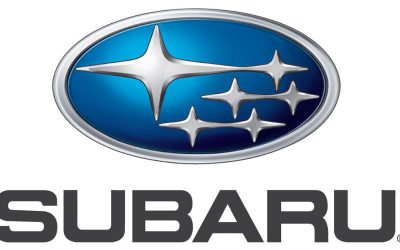Don’t overlook the fuel filter when diagnosing starting or stalling problems.
The fuel injection systems on present-day vehicles have become so highly sophisticated that we sometimes tend to overlook the simple things. When a customer arrives at the shop with a hard-start, no-start or stalling problem, the natural tendency is to grab the scan tool and look for a diagnostic trouble code, then delve deeper into OBD II. Next, the focus generally turns to the ignition system or the fuel injectors. We often forget the simple things, like the fuel filter. Granted, contaminated fuel isn’t as common as it once was, but it can – and does – get into the tank from time to time, which will eventually clog that all-important filter.
Twenty-five years ago, fuel filter replacement was always part of the routine maintenance job then quaintly known as a “tune-up.†The filters were typically located in the fuel line near the carburetor, and were easy to get to and change. If this wasn’t done on a regular basis, you might have a customer come in complaining that the car would start bucking, run out of power on the highway, and stall, but then restart. These symptoms were the tip-off that the filter was too restricted to allow sufficient flow to keep the bowl filled. That happened a lot because fuel-handling conditions were not the best. Old, corroded in-ground tanks allowed water and other contaminants to seep in and mix with the gasoline. Even the transport trucks were not very carefully inspected. So, it was generally recommended that fuel filters be replaced every 10,000 miles.
Today, gasoline is kept much cleaner from the refining plant to the storage depot, and from the transport trucks to the service station tanks. Industry and government vigilance and routine inspection has now provided consumers with the cleanest fuel ever. Thus, we tend to forget that every so often, fuel can become contaminated. Even a little water, rust, sludge or dirt can cause big problems for the precision injectors. Whether the contamination has built up over a long period of time, or is due to one fill of tainted fuel, the results are the same: possible driveability complaints, and damage to the fuel injection system (perhaps even the engine, too) that ranges from clogged injectors to a prematurely burned-out fuel pump. That exhibits another big difference between the old days and modern times: Mechanical fuel pumps were robust, so clogging that caused the symptoms mentioned had no effect on them. Besides, they were less expensive and easy to replace. That situation is profoundly different today with electric pumps.
Check the Fuel Pressure
On Subaru vehicles, it’s easy to check the fuel pressure before and after the underhood filter. Most models specify a fuel pump output flow pressure of 43.5 psi (an exception is the 1992-1997 SVX, for which the spec is 36.3 psi). Pressures lower than specified before the filter means there’s a problem with the pump, tank pick-up or fuel supply lines. A pressure drop at the output end of the filter indicates a restricted filter. Remember; if you have a clogged filter, there is a good chance that you have a problem in the fuel tank, too, in the form of either an accumulation of rust or dirt, a contaminated pick-up sock, or both.
Be sure to refer to the correct Subaru Service Manual for the model you are servicing for the correct filter, pump output flow pressure and tightening specifications.
Subaru Fuel Filters
You’ll find three basic types of fuel filters on Subaru vehicles. Models prior to 2004 had only the underhood canister-style fuel filter to supplement the mesh pickup screen on the fuel pump pick-up.
The 2004 and later WRX and STI models use an underhood filter and an additional filter built into the in-tank fuel pump, as do 2005 and later turbo models.
Non-turbo vehicles use a cartridge-type fiber filter incorporated into the fuel pump assembly.
All 2.5-liter DOHC turbocharged vehicles: 2005-2007 Forester XT, 2004-2007 STi and 2006-2007 WRX use a special high-flow filter assembly that fits into the in-tank pump structure.
Starting in 2006, all Subaru models were equipped with an in-tank filter.
Troubleshooting Fuel System Problems
Subaru offers the helpful fuel system troubleshooting chart on page 17 to diagnose and correct any fuel system problems.
| Trouble and Possible Cause | Corrective Action | |
| 1 | Insufficient fuel supply to the injector | |
| 2 | ||
| 3 | ||
| 4 | ||
| 5 |
Be Preventive
A five-year study of component replacement rates on vehicles in the United States by Industrial Marketing Research (IMR) shows a steady 19% annual average for replacement of fuel filters. Based on a conservative average of 12,000 miles driven per year, this means that vehicle owners are replacing the fuel filters on their vehicles about every 60,000 miles — or double what most vehicle manufacturers recommend for in-line fuel filters.
Be sure to follow the recommended fuel filter replacement intervals listed in the Owners Manual of the specific vehicle you are servicing. The old cliché: “It’s better to be safe than sorry,†certainly applies here.
Subaru recommends replacement of the underhood canister-type filter every 30,000 miles. You can prove this to your customers by showing them the Owners Manual, or by logging onto the Subaru Technical Information System (STIS) website while they look over your shoulder.
For optimum results, always use Genuine Subaru Parts available from your local N.E.W. Horizons Dealer, and always check the Subaru Technical Information System (STIS) website at http://techinfo.subaru.com for the correct information and specifications for the Subaru model you are servicing.
Service Note: When servicing the underhood canister-type fuel filter, please note that 2002 and prior torque specifications call for tightening the hose clamps to 1.0 Nm (0.7 ft. lb.). When servicing 2003 and later models, the specs call for 1.25 Nm (0.9 ft. lb.).





0 Comments